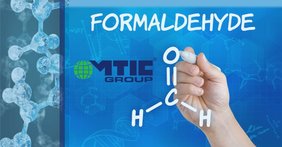REACH (Registration, Evaluation, Authorisation and Restriction of Chemicals), is a European Union regulation adopted to increase the protection of human health and the environment from the potential risks caused by chemicals. REACH applies in principle to all chemicals, whether used in industrial processes or in everyday use, and therefore has a major impact on most companies in the EU.
On May 2nd 2022, the European Commission (EC) submitted a draft amendment to WTO (World Trade Organisation) to amend Annex XVII of REACH by adding a new restriction on formaldehyde released from articles, which specifically concerns exposure to formaldehyde indoors by users.
Formaldehyde is mainly used as a chemical intermediate in the production of formaldehyde resins and other chemicals. It is precisely these resins that release the most formaldehyde under foreseeable conditions of use. They are widely used as adhesives and binders in the woodworking, pulp, paper and glassy synthetic fibre industries, in the production of plastics and coatings, and in textile finishing. Consumers can therefore be exposed to formaldehyde by breathing air containing formaldehyde released by these substances.
In 2019, the European Chemicals Agency (ECHA) prepared a restriction report to propose a restriction on formaldehyde released from articles. Based on the submitted opinions, the European Commission concluded that Annex XVII of REACH should be amended by adding a new restriction on formaldehyde released from articles. Compared to the opinions submitted by ECHA, the WTO draft modified the release limit for formaldehyde and some exemptions.
The new restriction is expected to be published in the last quarter of 2022. The transition period will be 36 months except for road vehicles, which will have up to 48 months.
In the table below, the proposed restrictions on formaldehyde released from articles is highlighted (the underlined contents are those modified in the WTO draft):
|
Target substance |
Formaldehyde and formaldehyde releasing substances |
|
Proposed scope of restriction |
Articles |
|
Proposed limit |
a) 0.062 mg/m3 for wood-based articles and furniture, the interior of the road vehicles; Note: the test method is specified in Appendix. |
|
Proposed exemption |
|
|
Proposed date of application |
36 months from the date of entry into force (for the road vehicles, the application date is 48 months from the date of entry into force) |
MTIC Group can support you at all stages: from document evaluation to examination of technical documentation, from laboratory testing against applicable standards to certification.
More information is available on our website at our relevant page
Request information by writing to info@mtic-group.org or a quote




